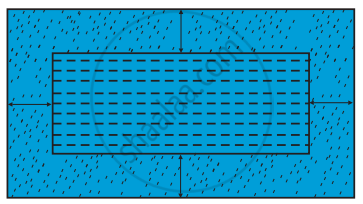Advertisements
Advertisements
प्रश्न
Solve the following quadratic equation by factorisation.
2y2 + 27y + 13 = 0
उत्तर
2y2 + 27y + 13 = 0
\[2 y^2 + 26y + y + 13 = 0\]
\[ \Rightarrow 2y\left( y + 13 \right) + \left( y + 13 \right) = 0\]
\[ \Rightarrow \left( 2y + 1 \right)\left( y + 13 \right) = 0\]
\[ \Rightarrow \left( 2y + 1 \right) = 0 \text{ or } \left( y + 13 \right) = 0\]
\[ \Rightarrow y = \frac{- 1}{2} \text{ or } y = - 13\]
So, \[\frac{- 1}{2} \text{ and } - 13\] are the roots of the given quadratic equation.
APPEARS IN
संबंधित प्रश्न
Solve for x
:`1/((x-1)(x-2))+1/((x-2)(x-3))=2/3` , x ≠ 1,2,3
Find the roots of the following quadratic equation by factorisation:
2x2 + x – 6 = 0
Determine two consecutive multiples of 3, whose product is 270.
The sum of two number a and b is 15, and the sum of their reciprocals `1/a` and `1/b` is 3/10. Find the numbers a and b.
Solve:
`1/(x + 1) - 2/(x + 2) = 3/(x + 3) - 4/(x + 4)`
Solve each of the following equations by factorization:
`2x^2-1/2x=0`
Solve each of the following equations by factorization:
`9/2x=5+x^2`
`x^2-4x+1=0`
The sum of the squares to two consecutive positive odd numbers is 514. Find the numbers.
Solve for x: `3x^2-2sqrt3x+2=0`
Solve the following quadratic equation by factorization: \[\frac{a}{x - b} + \frac{b}{x - a} = 2\]
Solve the Following Equation : x2- x - a (a + 1) = o
In each of the following, determine whether the given values are solution of the given equation or not:
`x = 1/x = (13)/(6), x = (5)/(6), x = (4)/(3)`
Solve the following equation by factorization
x(6x – 1) = 35
Solve the following equation by factorization
3(y2 – 6) = y(y + 7) – 3
Solve the following equation by factorization
x2 – (p + q)x + pq = 0
A piece of cloth costs Rs. 300. If the piece was 5 metres longer and each metre of cloth costs Rs. 2 less, the cost of the piece would have remained unchanged. How long is the original piece of cloth and what is the rate per metre?
Solve the following equation by factorisation :
`sqrt(3)x^2 + 10x + 7sqrt(3)` = 0
A train, travelling at a uniform speed for 360 km, would have taken 48 minutes less to travel the same distance if its speed were 5 km/h more. Find the original speed of the train.
In the centre of a rectangular lawn of dimensions 50 m × 40 m, a rectangular pond has to be constructed so that the area of the grass surrounding the pond would be 1184 m2 [see figure]. Find the length and breadth of the pond.
